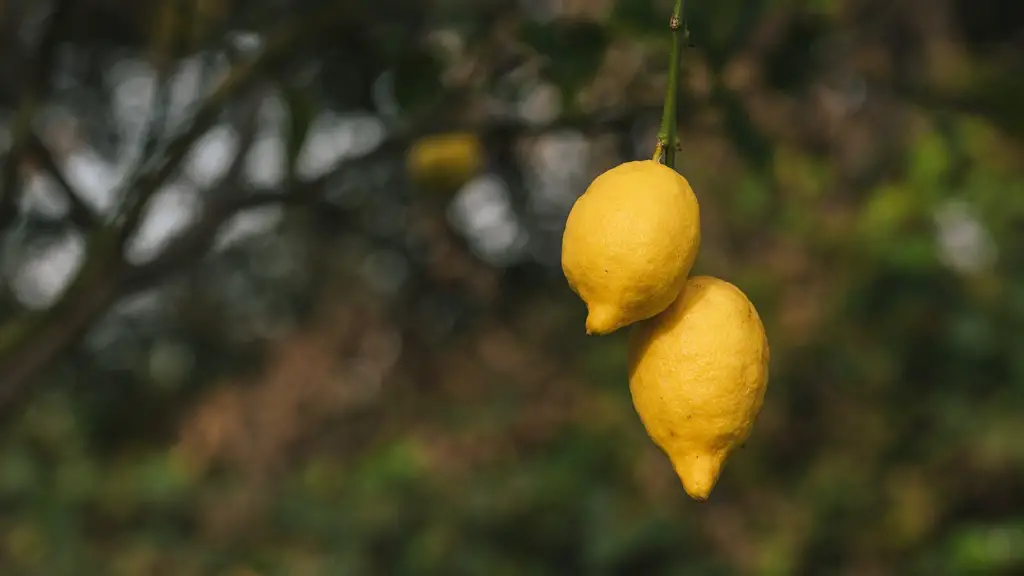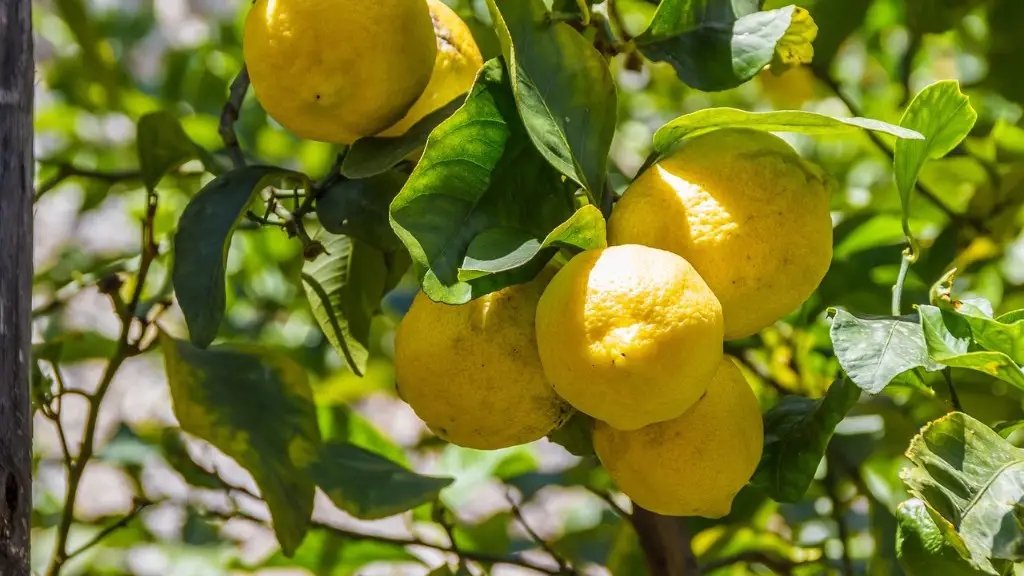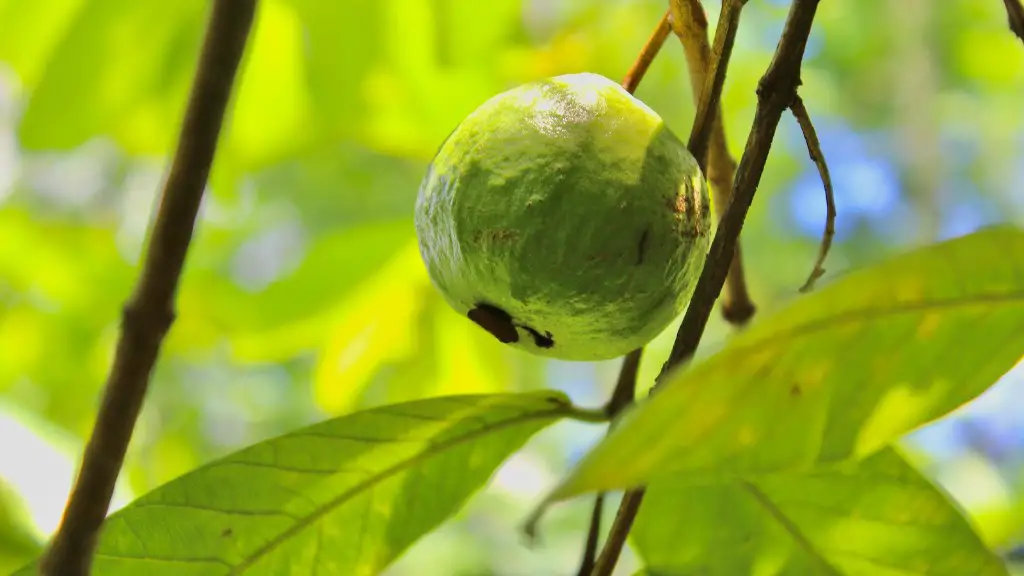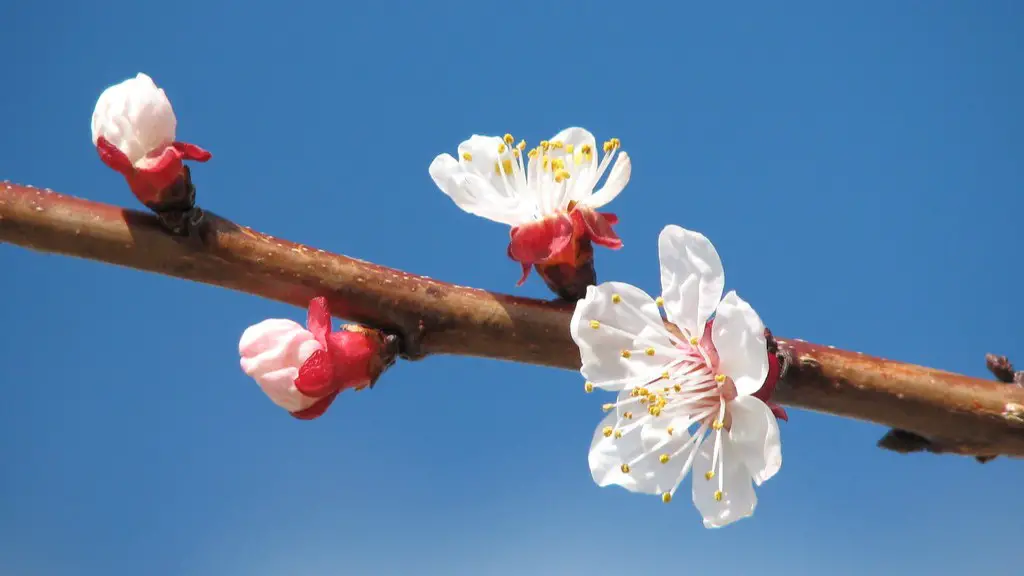Growing a lemon tree is a great way to have an abundant supply of the delicious fruits. With the right amount of care, you can have a lemon tree that is thriving, bearing lots of lemons. This article will explain the steps you need to take in order to get your lemon tree to produce lemons.
One of the main things you’ll need to do, is to give your lemon tree the right amount of sunlight and water. Lemon trees need full sun in order to produce lemons, so find a spot in your yard or on your balcony that will get full sun most of the day. Then, make sure you water your tree regularly. You want the soil to be moist but not soggy.
You’ll also need to make sure your lemon tree is properly fertilized. You can get a fertilizer specifically for citrus trees or mix up your own organic compost. Make sure you spread the fertilizer out at least 3-4 inches away from the base of the tree, to give it the best chance of absorbing the nutrients.
Next, you’ll want to take care of any pests or diseases. If your lemon tree has yellow or dropping leaves, it might be a sign of root rot or a pest infestation, so get it checked out. You might need to use an insecticide or fungicide to get rid of whatever is bothering your tree.
Finally, you’ll need to give your tree some patience. Lemons won’t start growing until the tree is about 2-3 years old, so you won’t get any fruit for a couple of years. Once the tree is established, though, it will start to bear delicious lemons if you take good care of it.
Prune and Train the Tree
Prune and train your lemon tree to create a sturdy, productive tree. Lemon trees tend to become leggy and overgrown if not properly pruned. Prune away any diseased or broken branches and dead leaves, which will help the tree get plenty of sunlight and air flow. Also, prune any branches reaching too far out, as they will take nutrients away from the healthiest parts of the tree. Aim to keep the shape of the tree in a rounded pyramid shape.
Train the lemon tree as it grows, by bending the branches down and tying them. This will encourage the tree to form branches that reach down and toward you, instead of away. You can also use support stakes to help maintain the shape of the tree and conserve its energy.
In addition, you can narrow down your tree to create fewer, larger leaves. This will ensure that each leaf gets plenty of sunlight, and thus enough energy to produce lemons. However, be careful not to thin your tree out too much.
Finally, if you want to create a more aesthetically pleasing tree, you can do some further training. You can prune the lemons off at different points on the branches to create a ‘chandelier’ effect. This will give your tree an attractive, decorative shape.
Be Patient
One of the most important things to remember when trying to get your lemon tree to produce lemons is to be patient. Lemons won’t start growing until the tree is at least two to three years old. It is important to have realistic expectations of your tree and to be patient while it grows and matures.
Once your lemon tree is ready to bloom, it can be a very rewarding experience. Watching your tree blossom, and then your lemons grow, can be a great joy. You can also become a more self-sufficient gardener if you can grow your own lemons.
Also, it’s important to keep an eye on your tree throughout the growing season. If you notice anything off with your tree, you should take action quickly to prevent any major damage. Pests or disease can quickly ruin a tree’s chances of producing lemons.
Finally, it is important to remember that even if your tree doesn’t produce lemons right away, it can still be a beautiful and useful addition to your landscape. Lemon trees make great ornamental trees, and they provide shade and shelter. So, don’t be discouraged if your tree doesn’t produce fruit quickly.
Harvest Smartly
Harvest your lemons when they are ripe, as they do not continue to ripen off the tree. When the fruit turns bright yellow, it is ready to be picked. You can also tell it is ripe by pressing it lightly and feeling if it is tender.
When harvesting, take care not to break the stem, as this could damage the tree and make it difficult for it to produce more lemons. So, carefully twist the lemons as you pick them. Also, it is best not to harvest too many lemons at once, as this could place too much stress on the tree.
Once your lemons are harvested, you can choose to use them straight away or preserve them for later. You can store the lemons in a paper bag, in a refrigerator, or you can juice them and freeze them. Storing the lemons whole will help them keep their flavour, while storing them as juice will extend the shelf life significantly.
Finally, if you want your lemon tree to keep producing lemons, you’ll need to keep harvesting regularly. After you’ve picked the ripe lemons, keep pruning and removing old fruit so that the tree can put all its energy into growing new fruit.
Pest Control and Fungicides
It’s important to keep pests and diseases away from your lemon tree if you want it to keep producing lemons. Pests like aphids and scale can damage the leaves of your tree, while diseases such as root rot can cause severe damage.
Check your tree regularly for signs of pests or disease and take action if you notice any. Use insecticides or fungicides to get rid of any insects or fungi that are harming your tree. Be sure to use products that are specifically designed for citrus trees, to avoid doing any more damage to your tree.
If your tree still isn’t producing lemons, it might be that the fertility of the soil needs to be improved. Use a lemon tree fertilizer to help the tree get the nutrients it needs. You can also add some compost or aged manure to the soil to boost its fertility, and make sure the tree is receiving all the minerals it needs.
Finally, be cautious of any products you use on your lemon tree, as some can be harmful. Always read the instructions carefully and wear gloves and a mask when using any type of pesticide or fungicide.
Mulch for Winter Protection
Mulching is a great way to protect your lemon tree during the cold winter months. Put a thick layer of mulch around the base of the tree to insulate the roots and protect them from the cold. This will also help keep the soil moist and conserve nutrients.
It is also a good idea to tie the branches of your lemon tree in winter, to prevent wind damage. You can use string or old pieces of fabric to do this. Make sure the branches are tied loosely and that the string or fabric is not too tight.
If you live in an area with very cold winters, you may want to consider investing in a frost cloth for your lemon tree. Frost cloths act as an extra layer of protection, keeping the cold out and the warmth in. This can be beneficial for lemon trees that are sensitive to cold temperatures.
Finally, if you want to give your lemon tree a little extra protection, you can wrap it in a thick blanket or tarp. This is especially useful for younger trees that are more vulnerable to frost. Just be sure to remove the blanket as soon as temperatures start to rise.




